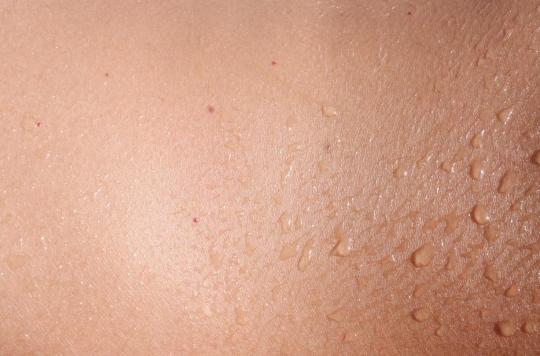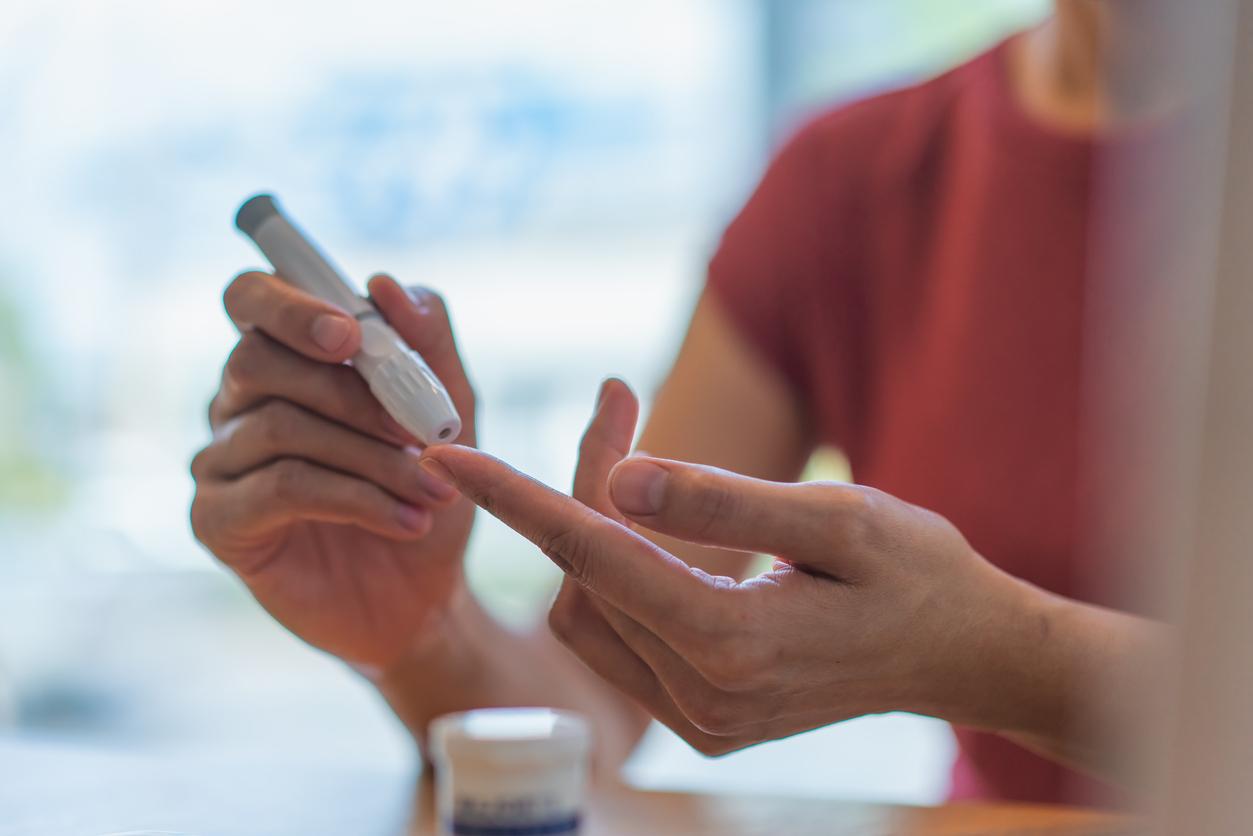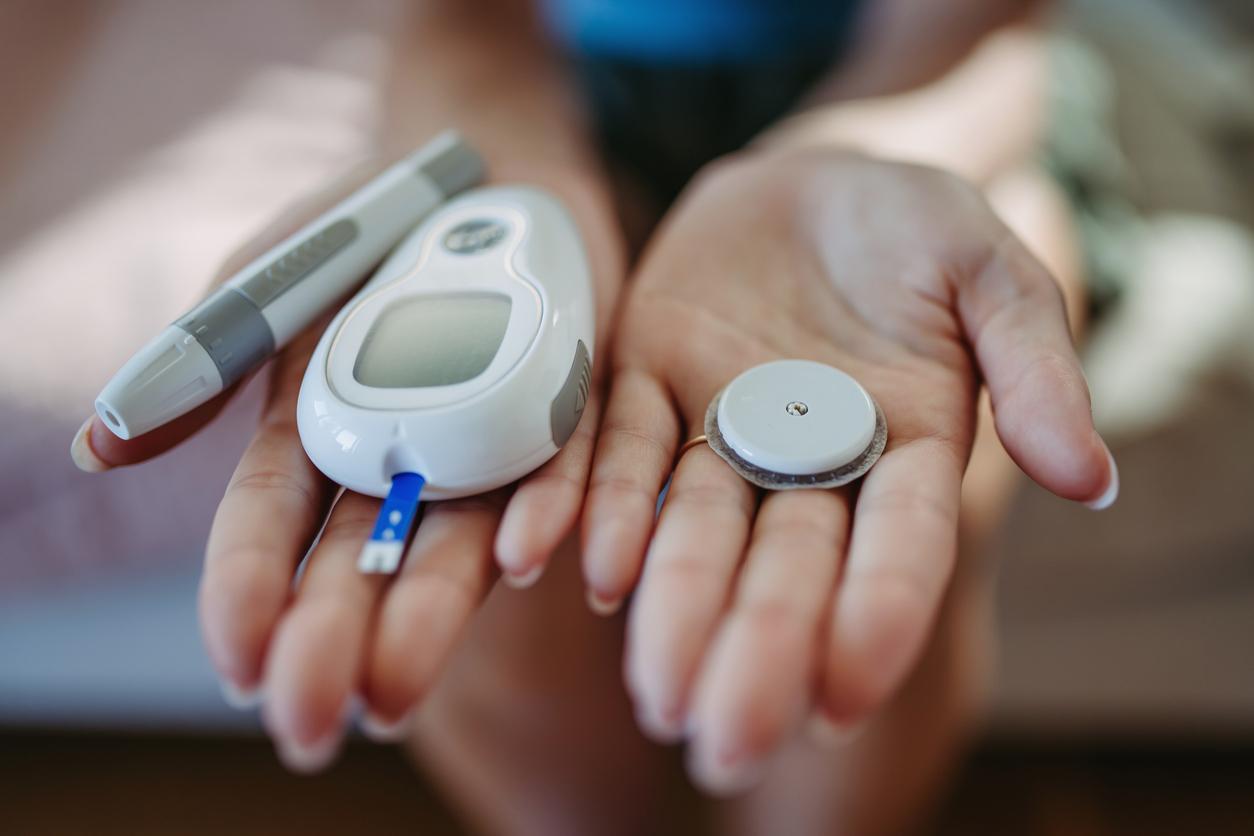American researchers are developing skin sensors capable of detecting the content of our perspiration.

Usually, it is the blood tests that give an overview of our general state of health. It is thanks to them that our general practitioner knows if we are dehydrated or tired. However, for needle-phobic people, this invasive procedure can be a particularly unpleasant experience. However, the bites could very soon be just a bad memory. Indeed, according to a study published Friday, August 16 in the journal Science Advances, researchers at the University of California, Berkeley, are developing skin sensors that can detect the content of our sweat. Our body temperature, as well as our levels of sodium, potassium, glucose and lactic acid… all these important data of our metabolism are detectable in sweat.
The scientists succeeded in creating their device thanks to the so-called roll-to-roll procedure. The latter allowed them to print the sensors in a plastic sheet. These contain a microscopic coiled or micro fluid tube that wicks sweat away from the skin. By tracking the speed of sweat movement, sensors report how a patient is sweating. Microfluids are also equipped with chemical sensors capable of detecting concentrations of electrolytes such as potassium and sodium, and metabolites such as glucose.
The researchers therefore placed the sweat sensors on different places on the volunteers’ bodies, including the forehead, forearm, underarm and upper back. They measured their sweat rate and the levels of sodium and potassium in their sweat as they cycled indoors.
Giving advice to athletes who push too hard
They were thus able to observe that the local sweating rate could indicate a loss of fluid during exercise. Thus, studying the rate of perspiration could help give advice to athletes who exert themselves too much. “Before what people were doing was collecting sweat from their bodies for a while and analyzing it. So you couldn’t actually see the dynamic changes with good resolution. Using these wearable devices we can now collect continuous data from different parts of the body to understand, for example, how sweat loss can estimate body fluid loss,” explains Hnin Yin Yin Nyein, co-author of the paper.
Using the roll-to-roll technique, they were able to manufacture sensors on a large scale and at low cost. “Large-scale manufacturing demonstrates the potential for applying the concept of sweat sensors in practical applications,” says Jussi Hiltunen, who participated in the study. “
“No simple and universal correlation between sweating and blood sugar”
But, “the goal of our project is not just to make these sensors but to start doing a lot of studies and seeing what sweat is telling us. I always say ‘decode’ the makeup of sweat,” explains Ali Javey, professor of technical engineering and computer science, lead author of the paper.
The researchers also used their sensors to compare the blood sugar levels of healthy and diabetic patients. They then realized that a single sweat blood sugar measurement did not necessarily indicate a person’s blood sugar level. “There were a lot of hopes that non-invasive sweat tests could replace blood measurements for the diagnosis and monitoring of diabetes, but we have shown that there is no simple and universal correlation between sweat and blood sugar,” explains Mallika Bariya, graduate student in materials science and engineering at UC Berkeley and another senior author of the study. And to conclude: “It is important that the community knows this, so that in the future, we focus on individualized or multiparametric correlations”.
Diabetes is a very common disease in the world. According to WHO, the number of people affected has increased from 108 million in 1980 to 422 million in 2014. And a large majority of patients have type 2 diabetes. The latter results from poor use of insulin in the body. It most often occurs due to being overweight and being sedentary.

.

















